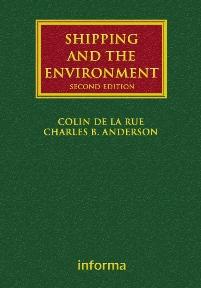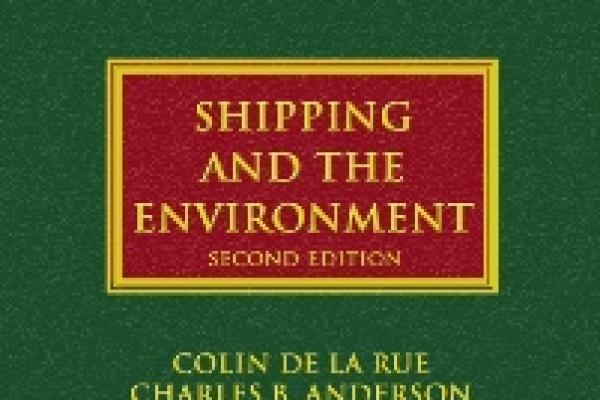
Steamship Mutual
Published: February 01, 2010

The Second Edition of this seminal textbook was published last year. Including new chapters on offshore craft, the Bunkers Convention, recourse actions following collisions, limitation of liability and the liability of pilots and maritime authorities, this book is an essential resource for Clubs and lawyers alike.
The eleven years between the publication of the first and this latest volume have seen dramatic changes to the pollution liability landscape. The catastrophic "Erika" and "Prestige" incidents prompted the accelerated phase-out of single hulled tankers and the development of the STOPIA and TOPIA agreements. These years also saw a dramatic increase in incidents of criminalisation of seafarers, owners and all parties connected with the operations of vessels. Hopefully, criminalisation reached its nadir in South Korea with the imprisonment of the Master and Chief Office of the “Hebei Spirit”, an incident which involved no fault on the part of the imprisoned crewmen, but this may be unduly optimisitic. In any event, the book’s Chapter 30 will prove a useful guide. These years also saw the development and entry into force of the Bunkers Convention, which resulted in all vessels, and not just tankers, having to deal with issues of certification under an international compensation regime. All of these, and numerous other relevant legal and political developments, are comprehensively dealt with by the authors, making this edition an indispensable resource for shipping and its related industries, not least P&I Clubs.
The Second Edition follows a similar structure to the first, with Part I – Liability and Compensation for Oil Pollution Damage – including two new chapters on Pollution from Offshore Craft and Pollution form Ships’ Bunkers. The chapter on Pollution from Offshore Units is a welcome addition to the limited academic literature on the topic. Here the authors, in addition to looking at the application of the international compensation conventions and limitation regimes as well as OPA, look at the approach of P&I Clubs to such risks and the availability of cover for same. An issue that is focussed on, and that may also of great importance in the context of STOPIA and TOPIA – the voluntary regimes adopted to address the perceived imbalance in the sharing of pollution liabilities between shipowners and oil importing states (i.e. under the CLC and The IOPC Fund respectively) – is the right to pursue recourse actions against third parties, to recover liability arising under voluntary regimes. This issue is relevant to the offshore sector because of OPOL, The Offshore Pollution Liability Agreement – a voluntary industry compensation scheme. STOPIA and TOPIA are looked at in Chapter 2 of Part I.
Chapter 6 – Pollution from Ships’ Bunkers – provides a very helpful guide to the 2001 Bunkers Convention. This chapter examines the scope and application of the Convention, its unfamiliar approach to limitation (unfamiliar to those accustomed to the CLC) and the Convention’s requirements of compulsory insurance and certification. This chapter also refers to the “Cosco Busan”, a Steamship Mutual case, which highlights a number of issues relating to Bunker Pollution in the United States. That case has received considerable press attention because of the issues it raises in the context of the liability of pilots and maritime authorities. In this regard, this edition’s new Chapter 18 – Pilots and Maritime Authorities – is fascinating, apposite and highly topical. Pilots’ liability is an area of increasing profile and debate: the incidence of claims involving pilots was examined and reported on in detail by the International Group in 2008. This chapter excellently explains a complex area of law that cuts across various conventions and jurisdictions.
The question of charterers’ liabilities for pollution incidents is of great importance to insurers of charterers liabilities. It is unquestionably the greatest area of risk for a charterer, especially tanker charterers, as demonstrated by the huge claims and related litigation following famous casualties like the “Tasman Spirit”, the “Aegean Sea”and the “Erika”. The last of these, the “Erika”, was both unusual and worrying in that it showed victims of a pollution incident attempting and, at first instance, succeeding with a claim against Total, the charterer of that vessel. Charterers are usually protected by the channelling provisions in the CLC, but in that case the Paris High Court was able to step around the channelling provisions to find Total liable in its capacity as a vetting company that approved the ship to carry the cargo in question. As vetting is very much part of chartering operations, it is difficult to see the finding of the Paris High Court, which is presently being appealed, as anything more than a charterers’ liability, albeit by another name. This case and its implications are thoroughly analysed in an updated Chapter 15.
This brief review barely does justice to a book that is so thorough and so well-researched as to merit being in the library of everyone interested in this field. Its scope is enormous, ranging from the international conventions to important individual jurisdictional quirks, from complex legal questions to practical claims handling problems, touching on private and public international law, claims in contract and tort and, of course, the approach to pollution in the United States. Throughout, the authors manage to illustrate the political background that shaped and continues to shape their subject matter which serves to make this book enjoyable as well as informative.


